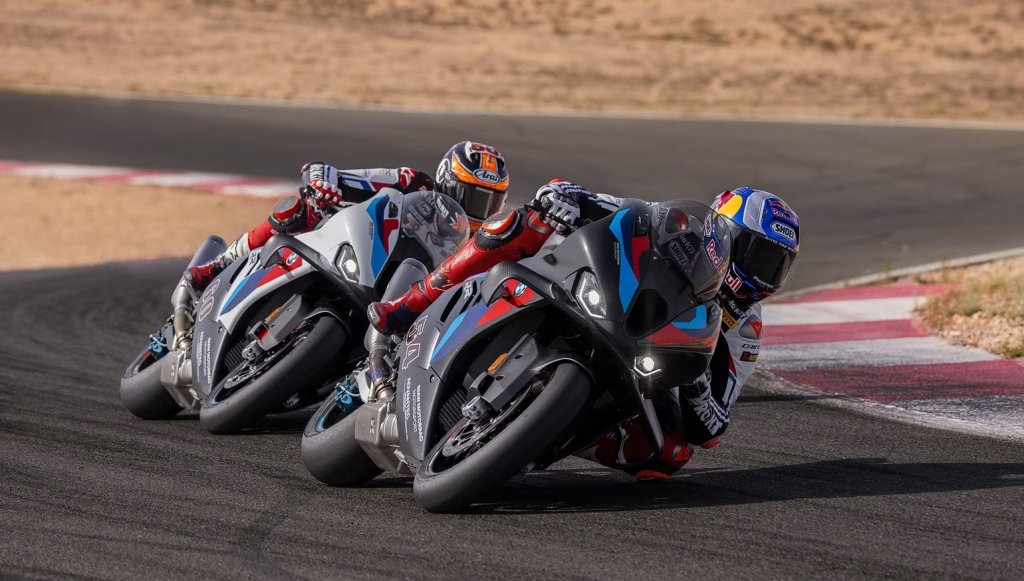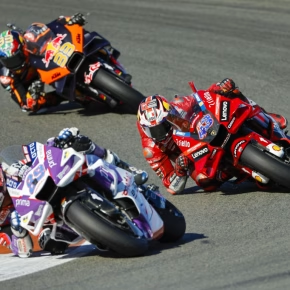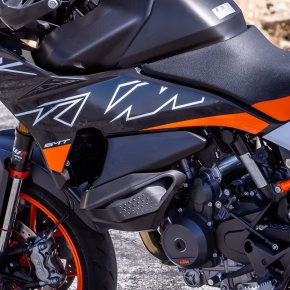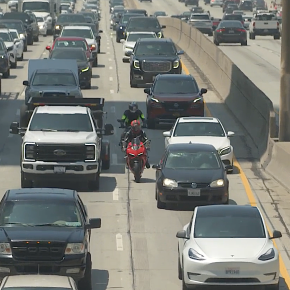The M 1000 RR, BMW’s foundation for its Superbike racing in both world and national championships, sees engine adjustments for 2025, primarily to meet Euro5+ emissions standards. While peak horsepower in the U.S. model is still rated at 205, internal changes like updated combustion chamber and valve shapes are subtle upgrades that most owners won’t notice. The most visible updates are external, such as the redesigned winglets. BMW aimed to boost the M 1000 RR’s aerodynamics by adding a new plastic front fairing, windscreen, and larger carbon fiber winglets, which reportedly generate even more downforce. This extra downforce is designed to help curb the bike’s wheelie tendencies and improve front tire grip for faster cornering. BMW states the revised wings now offer 16.8 pounds of downforce at 93 mph, up from 12.6 pounds in the 2024 model, and provide a notable 16.3-pound difference at 186 mph—if you find a place to test that out. BMW emphasizes that this added downforce doesn’t affect top speed. Interestingly, while the wings highlight the 2025 design, the new fairing’s asymmetry pays homage to the first-generation M 1000 RR from 2009.
A change all four 1000cc models share—and one likely more noticeable to riders than the updated wings—is BMW’s M Quick-Action Throttle, reducing rotation from 72 degrees to 58 degrees for improved throttle control, especially in a tucked position on the track. Another addition to the M 1000 RR’s electronic aids is Brake Slide Assist, which uses a steering angle sensor and ABS to help riders manage rear slides—primarily intended for track use, though it’s sure to be tested in everyday conditions. Additionally, a new Slick mode has been added among the riding settings, optimized for track use with slick race tires.




